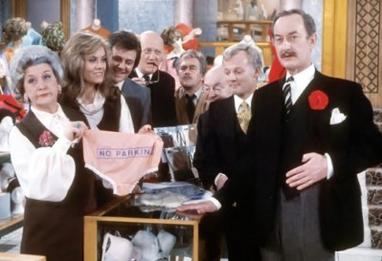In two recent posts, the estimable Paul Krugman has reproduced a chart from Jonathan Portes which appears to show that the United Kingdom has slashed public investment since 2008. In the chart, public investment falls from 3.5 percent of GDP to 1.5 percent over the space of 3 years. No wonder Krugman says "they're eating the seed corn" and all in the name of that awful Coalition austerity.
But if you reflect a little bit on that information, you might find yourself asking: really -- they managed to halve public investment over three years? It's the kind of thing you might notice, and indeed the kind of things that others might notice given how hard it is to cut any component of public spending.
And then you start digging. Whereupon it turns out that the UK government did not slash public investment by half over three years, at least not in any sense of active cuts to the capital budget. No. What they did was not continue a very temporary last gasp of New Labour splurge on investment that had taken investment far above its historical average, and indeed far above any level achieved in the Blair-Brown era.
Here's the historical series on public sector net investment as a share of GDP since 1970 (Table 4.1, 7th column). That Brown surge briefly got investment up to a level that hadn't been seen since Are You Being Served was in its original run, and even the current Coalition "cuts" have it back it a level about the same as the Cool Brittania years.
Now stimulus advocates could say that the point still stands: surely the time to boost investment is when interest rates are so low. But you could also look at the preceding 30 years and wonder what was holding back investment then? And the answer might be that revenues were so squeezed by the other commitments of the welfare state that there was no room for public investment. Which might in turn explain why public infrastructure in the UK can seem so shabby today. Which might give you an insight into where those awful austerity people are coming from: the state has to be restructured to make room for the things that the state used to do. It could be that both sides have a point. Which means that one side is not so obviously wrong.
But if you reflect a little bit on that information, you might find yourself asking: really -- they managed to halve public investment over three years? It's the kind of thing you might notice, and indeed the kind of things that others might notice given how hard it is to cut any component of public spending.
And then you start digging. Whereupon it turns out that the UK government did not slash public investment by half over three years, at least not in any sense of active cuts to the capital budget. No. What they did was not continue a very temporary last gasp of New Labour splurge on investment that had taken investment far above its historical average, and indeed far above any level achieved in the Blair-Brown era.
Here's the historical series on public sector net investment as a share of GDP since 1970 (Table 4.1, 7th column). That Brown surge briefly got investment up to a level that hadn't been seen since Are You Being Served was in its original run, and even the current Coalition "cuts" have it back it a level about the same as the Cool Brittania years.
Now stimulus advocates could say that the point still stands: surely the time to boost investment is when interest rates are so low. But you could also look at the preceding 30 years and wonder what was holding back investment then? And the answer might be that revenues were so squeezed by the other commitments of the welfare state that there was no room for public investment. Which might in turn explain why public infrastructure in the UK can seem so shabby today. Which might give you an insight into where those awful austerity people are coming from: the state has to be restructured to make room for the things that the state used to do. It could be that both sides have a point. Which means that one side is not so obviously wrong.
